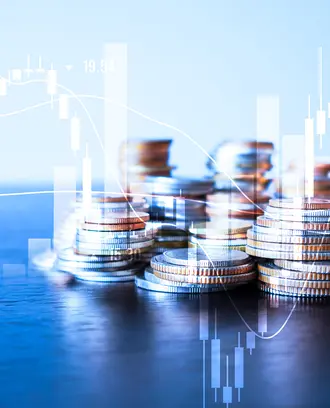Credit: Mimi Phan
From skeptic to evangelist: MIT Sloan economist runs the numbers on ESG
Environmental, social, and governance-related investing might be approaching mainstream status, but ESG still has plenty of skeptics who cite poor performance, inconsistent ratings, and greenwashing.
Recent political backlash is adding further complication, with U.S. House and Senate bills aimed at curbing ESG investing in workplace retirement accounts. In addition, at least 18 states, including Florida, Texas, West Virginia, and Louisiana, are pushing back and publicly condemning ESG.
Once a cynic, MIT Sloan finance professor has come around. At the first MIT Sloan ESG and Impact Finance conference in February, Lo explained in a keynote talk how he changed his mind about ESG — now a market worth half a trillion dollars, he said.
Lo started his journey from a place of deep skepticism. Five years ago, “I thought impact investing was something perpetrated by unscrupulous financial institutions trying to push products onto unsuspecting investors,” said Lo, who is also the director of MIT Sloan’s Laboratory for Financial Engineering. “Boy, was I wrong.”
Many people, like Lo, have realized that it’s possible to invest in the social good and turn a profit at the same time. During the pandemic, for example, data showed that impact investments outperformed traditional investments.
Is ESG investing fiscally responsible?
The movement is really fueled by investor demand, not by financial institutions, Lo said, especially from younger generations of investors for whom earning a rate of return is not enough.
Lo, too, cared about ESG principles, but he was tripped up by the thorny matter of fiduciary responsibility, whereby fiduciaries are required by law to act in the best interests of their clients. He wondered whether it was truly possible to balance the legal responsibilities of fiduciaries with their clients’ desire for social impact.
For quite some time, many ESG investors assumed that there must be a trade-off when diverging from the traditional approach of maximizing risk-adjusted return — that you have to give up return to deliver on impact.
Lo and his co-author developed a framework to shed light on this conundrum by answering the following questions:
- How do fiduciaries know whether they’re helping or harming investors by providing them with impact?
- How can this information be quantified?
ESG makes sense when you can quantify the impact
In their paper “Quantifying the Impact of Impact Investing,” Lo and Peking University’s Ruixun Zhang present a framework for assessing the financial impact of any form of impact investing — including ESG products — against various index benchmarks. “We derive conditions under which impact investing detracts from, improves on, or is neutral to the performance of traditional mean-variance optimal portfolios,” they write.
Related Articles
Armed with this type of information, portfolio managers can then construct portfolios that achieve impact while also retaining attractive risk-adjusted returns — and then communicate these results to investors, Lo said.
Lo cited the case of the Cystic Fibrosis Foundation, which invested $150 million over several years in Vertex Pharmaceuticals to develop drugs to treat cystic fibrosis. Lo called this a “strange conundrum” — where a nonprofit organization focused solely on impact made a significant profit (over $4 billion) by investing in a company that specializes in the treatment of rare diseases.
In a separate paper, Lo, Zhang, and co-authors Roberto Rigobon, Florian Berg, and Manish Singh, all from MIT Sloan, quantified the financial performance of ESG portfolios in the U.S., Europe, and Japan. Using data from six major ESG rating agencies, the researchers documented statistically significant excess returns in ESG portfolios from 2014 to 2020 in the U.S. and Japan.
“We were shocked by the results,” Lo said. “For some of these ESG investments, you actually can have your cake, eat it too, and lose weight. Under the right circumstances, and with the right tools, you can achieve impact while delivering attractive returns to investors.”
Overall, it’s important to remember that impact investing can have positive and negative effects on a portfolio, Lo said. The key, he suggested, is to “pay attention”: Use the framework he and Zhang developed to carefully select individual securities, and then identify the financial consequences of those choices.
“With the proper tools, we can all do well by doing good,” he said. “Finance doesn’t have to be a zero-sum game.”
Read next — ESG ratings: Don’t throw the baby out with the bath water



